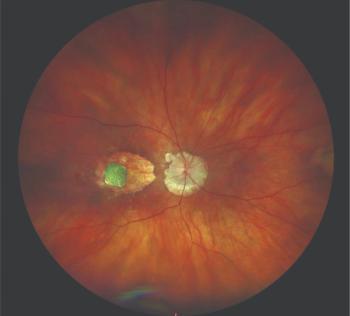
AGS 2024: Nicox presents data on NCX 470
During the 2024 American Glaucoma Society meeting held February 29 to March 3 in Huntington Beach, California, Nixoc SA presented posters outlining data on NCX 470.
Nicox SA provided details of poster presentations highlighting data on NCX 470 at the 2024 American Glaucoma Society (AGS) Annual Meeting, one of the key scientific events in vision research, which was held on February 29 to March 3, 2024, in Huntington Beach, California.
Doug Hubatsch, chief scientific officer of Nicox, the company is pleased to present data on its lead product candidate NCX 470 in glaucoma to the scientific community at the prestigious AGS meeting.
“The data provide further evidence of the efficacy of NCX 470, and its robust intraocular pressure lowering effect, reinforcing the positive results we have seen in the first Phase 3 trial, Mont Blanc,” he said in a news release. “We are looking forward to continuing to progress NCX 470 in the second Phase 3 trial, Denali, and moving this innovative product towards market.”
According to the company, NCX 470, a novel NO-donating bimatoprost eye drop, is currently in Phase 3 clinical development for the lowering of IOP in patients with open-angle glaucoma or ocular hypertension. Results of Mont Blanc, the first of the two Phase 3 clinical trials, have been announced in October 2022.1
The second Phase 3 clinical trial, Denali, is currently ongoing, and the results are expected in 2025.
Details of the presentations are as follows:
A poster titled Intraocular Pressure Reduction with NCX 470 versus Latanoprost Across the Spectrum of Baseline Intraocular Pressures provided an analysis of Intraocular pressure (IOP) reduction by baseline IOPs demonstrated that in patients with baseline pressures ≤ 28 mm Hg.
NCX 470 was numerically better at all, and statistical superior at 5/6 timepoints at lowering IOP vs. latanoprost, the current standard of care. Furthermore, NCX 470 provided consistent IOP reduction across the spectrum of baseline IOPs while latanoprost IOP reduction was baseline IOP-dependent.1
A second poster, titled Intraocular Pressure Reduction with NCX 470 versus Latanoprost In Previously Treated Versus Treatment-Naïve Patients, was also detailed.
In a pre-planned analysis, we tested whether being on previous IOP lowering medications had an impact on the IOP lowering of NCX 470. Previously treated subjects had greater IOP lowering vs. latanoprost at all timepoints but not by a clinically significant margin.
Differences in IOP lowering between treatments were minimal in previously untreated patients. Whether previously treated or treatment naïve should not impact the selection of NCX 470 versus latanoprost in the treatment of OAG or OHT.
In December 2023, Nicox SA announced the first patient has been screened in the Whistler Phase 3b clinical trial investigating the dual mechanism of action (nitric oxide and prostaglandin analog) of NCX 470.
According to the company, its Whistler Phase 3b trial will enroll ~20 healthy volunteers with ocular hypertension in a double-masked, placebo-controlled study which will investigate the action of NCX 470 on aqueous humor parameters including trabecular meshwork outflow and episcleral venous pressure. The company noted that each subject will participate in the trial for ~8 days and will provide insight into the mechanism of action of NCX 470. The trial is expected to take approximately 1 year to complete.2
Reference:
Antipolis S. Nicox Announces Presentation of Data on NCX 470 at the 2024 American Glaucoma Society Annual Meeting -Release at 7:30 Am CET.; 2024. Accessed March 5, 2024.
https://ml-eu.globenewswire.com/Resource/Download/411aa913-29f0-4126-aa6e-5bbc1ad9f671 Nicox Announces First Patient Screened in the Whistler Phase 3b .
www.globenewswire.com/news-release/2023/12/18/2797468/0/en/Nicox-Announces-First-Patient-Screened-in-the-Whistler-Phase-3b-Trial-of-NCX-470-in-Glaucoma.html. Published December 18 , 2023. Accessed December 18, 2023.
Newsletter
Don’t miss out—get Ophthalmology Times updates on the latest clinical advancements and expert interviews, straight to your inbox.





